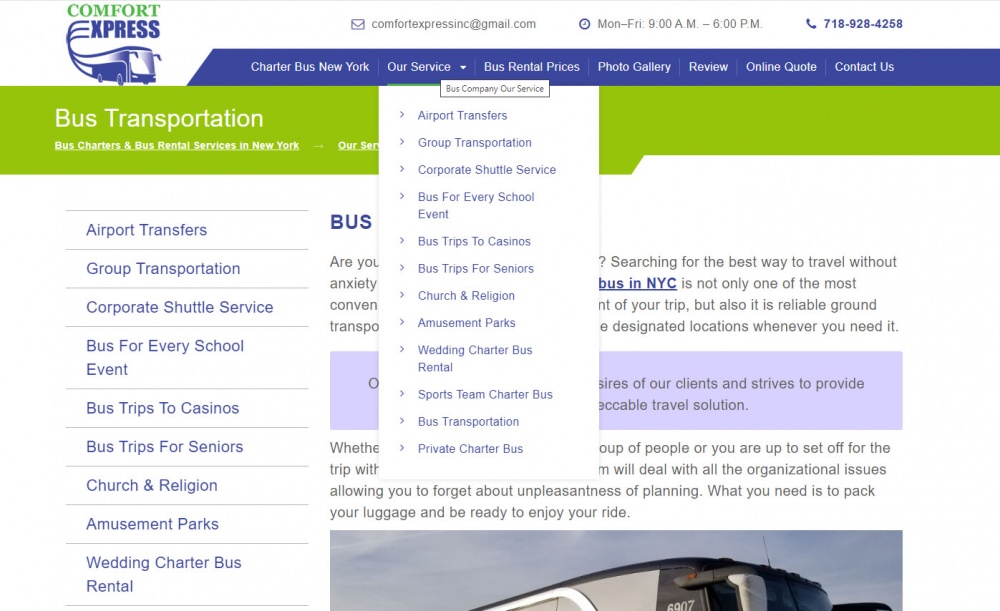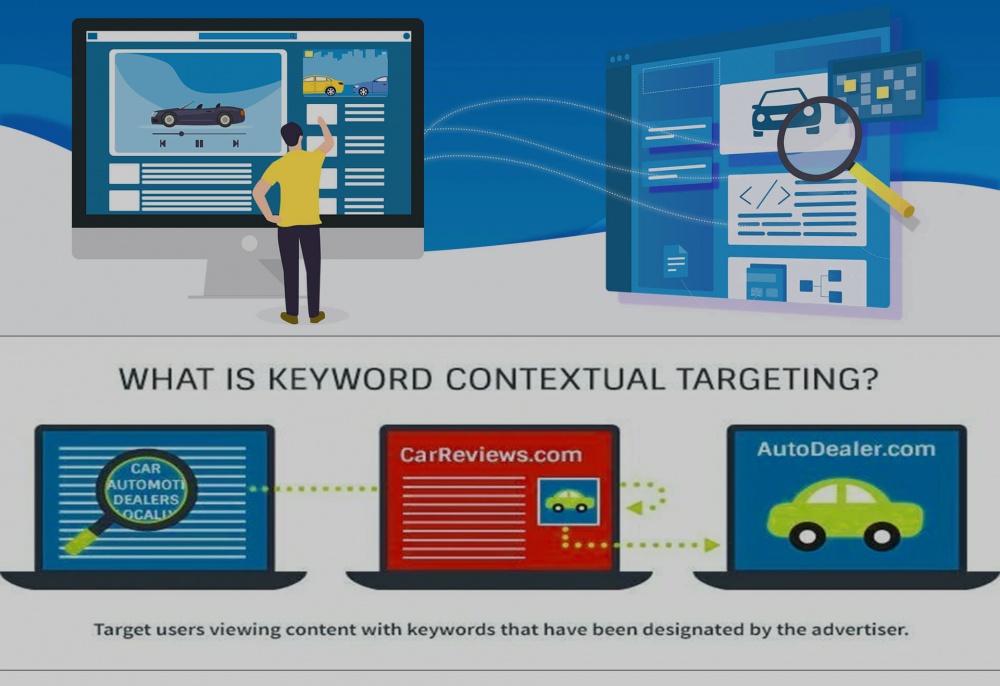One of the key aspects of a successful transportation company website is its high accessibility. Visitors should easily identify where to find the necessary information. The homepage should be filled with specific and useful data about the company's activities in New York, avoiding generic statements.
It is essential to ensure website adaptation for mobile devices. According to data from radar.yandex.ru as of March 2021, approximately 64% of website visits in Belarus come from mobile devices. This percentage is constantly growing, and if your website is not yet adapted, now is the time to start to ensure convenience for potential clients.
The website should contain detailed contact information, including legal details, phone numbers, email addresses, and links to social media pages. Placing a map with the office location is also helpful for clients.
It is recommended to provide multiple contact phone numbers to ensure easy access for clients to the right person or department. A feedback form will be convenient for those who prefer not to make a phone call. Having various contact options on the website immediately demonstrates to visitors that reaching out to the company representatives is easy. This approach creates a favorable image for the company, especially if the contact page includes photos of employees.
Photos in the section about the fleet of vehicles are also necessary; it's best to arrange a professional photoshoot to highlight the uniqueness of your vehicle fleet and create a positive impression of the company.
How should the structure of a website be organized?
Does it make sense to include news content on the pages in addition to basic information about the services and the company?
The structure of a website plays a crucial role in user convenience. Important sections such as the fleet, contacts, rates, and the booking form should be easily accessible from any page, preferably in the website header, to reduce the need for searching.

A transportation cost calculator can significantly enhance user experience by allowing them to instantly estimate the cost of services based on entered parameters. This creates transparency and helps customers better understand your rates.
Capturing the attention of customers to your company's services requires diverse and engaging content. Supplement text with images, videos, and infographics to make information more appealing and memorable. Introducing bulleted lists can visually break up text, making it more user-friendly.
Regarding news content, it can be quite beneficial for logistics companies. Through news updates, you can showcase the active development of your business, highlighting new routes, acquisitions of new equipment, and other significant milestones.
However, it's important to maintain the relevance of news. A neglected news section with outdated information can create a negative impression. Regularly updating content related to the company's development will sustain user interest and demonstrate that your business is in an active state.
Thus, news content can be useful, but its effectiveness depends on the regular updating and keeping the information on the website current.
Do social media groups matter? How to effectively manage/promote them?
The topic of utilizing social media groups and effectively managing them in the context of business promotion is becoming increasingly relevant. In the era of active social platform development, overlooking their potential for logistics companies can be considered imprudent.
A social media group is an excellent tool for connecting with customers and promptly informing them about upcoming promotions, as well as exchanging other important news. Before creating a corporate account on a social network, it is crucial to clearly define what content will be posted and who it is intended for – in other words, the target audience you intend to attract.
Understanding the strengths and weaknesses of each social platform is a key element of a successful promotion strategy.
For example, on Instagram and YouTube, where visual content is highly sought after, it makes sense to post photos and short videos showcasing impressive trucks and contemplative moments of road journeys.
While VKontakte and Facebook can be used for textual information, it's important to accompany it with images to capture the audience's attention. Additionally, LinkedIn, focused on professional networking, serves as an effective platform for advertising logistics companies in New York, making it easier to find an audience interested in promoting your business.

What is the significance of SEO in promoting a transportation company?
The significance of SEO (Search Engine Optimization) in promoting a transportation company cannot be underestimated. An optimized website ensures visibility to interested users, which is a key element in the successful online promotion of transportation services in NY.
An essential aspect of optimization is considering the search queries potential clients might use. For instance, optimizing pages for queries containing city names associated with the company's services allows for securing top positions in search results, ensuring the site's visibility to the target audience.
The structure of the website also plays a crucial role. Creating separate pages for each service allows users to easily find the necessary information, enhancing the usability of the site. For example, dedicated pages for services such as customs clearance provide quick access to relevant information.
Generating informative content also contributes to improving the site's positions in search results.
Publishing articles based on the experiences of employees and aimed at addressing customer issues in the logistics sector not only attracts search engine attention but also enhances the company's credibility in the eyes of users.
Ultimately, an effective SEO strategy becomes an integral part of the successful promotion of a transportation company, ensuring the attraction of the target audience and increasing conversion rates.
Advantages of contextual advertising

Target Audience: Contextual advertising allows reaching the target audience at the moment of their active search. Advertisements appear in front of users actively seeking specific products or services, increasing the likelihood of attracting interested customers.
- Quick Start - Contextual advertising yields fast results. Once the campaign is launched, ads can appear in search results, providing a quick start for promoting products or services.
- Customization Flexibility - Advertisers have the ability to customize the campaign flexibly by choosing keywords, regions, and other parameters. This allows optimizing costs and managing the effectiveness of the advertising campaign.
- Results Tracking - The ability to track the effectiveness of advertising in real-time allows advertisers to quickly adapt to changes in the market situation and optimize the campaign.
In which cases is targeted advertising effective?
Targeted advertising, in a certain sense, extends the ideas of contextual advertising in terms of the importance of aligning displayed ads with user interests. Unlike contextual advertising, targeted ads are based on what a person has searched for online previously and which pages they have visited.
Targeting is beneficial because it allows directing ads to narrow target audiences: owners of import-export businesses, logistics professionals, warehouse owners, and so on.
The effectiveness of targeted advertising also lies in the fact that a person who previously searched for a transportation company from a computer will see your ads on a smartphone, and vice versa.











